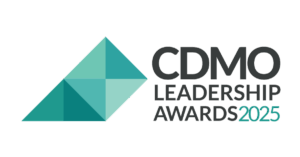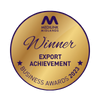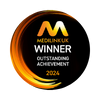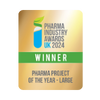Tablets continue to be one of the most popular pharmaceutical dosage forms, as with the right tablet formulation you can achieve: ease of handling and administration for patients, stability convenient packing options, and well-established cost-effective manufacturing processes which produce consistent quality products.
However, there are also disadvantages which can include: poor bioavailability, instability within the gastrointestinal (GI) tract and the potential of causing irritant effects or harming the GI mucosa. Many of these can be mitigated against through successful tablet formulation development.
There are many different types of tablets and drug-release technology that can be applied to the formulation. This article covers the formulation strategies and manufacturing processes of tablets.
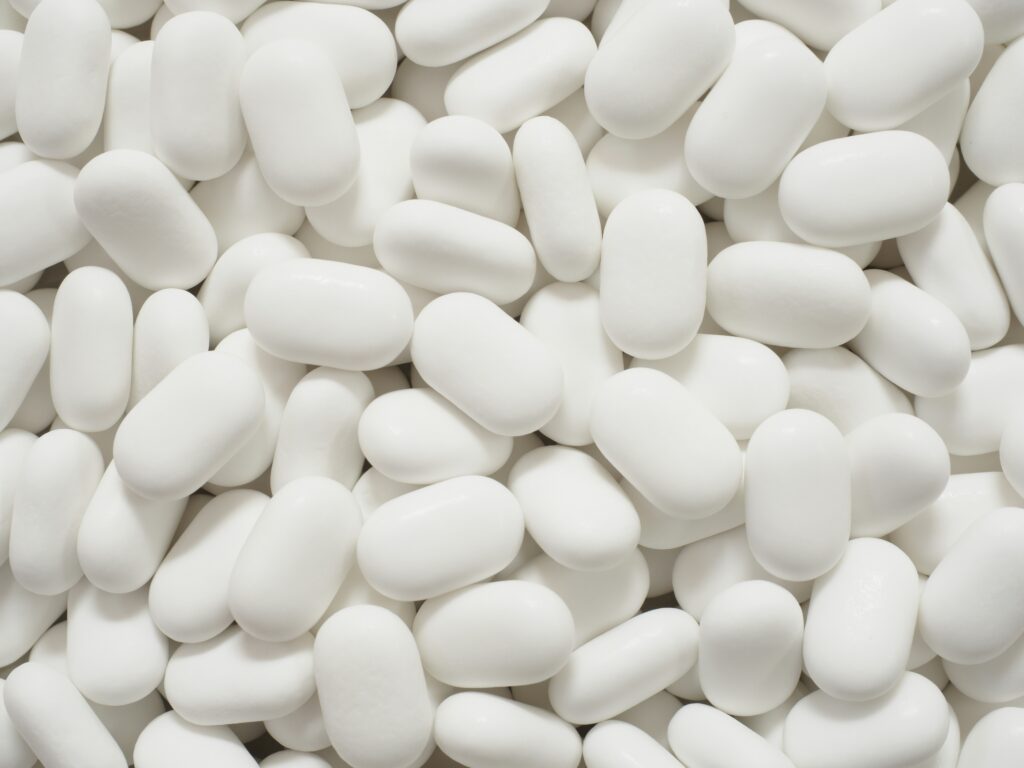
Discover Upperton's Oral Dosage Form Capabilities
Oral administration remains the most widely used route for the successful delivery of active pharmaceuticals to patients. Discover how a CDMO partnership can streamline your drug development journey.
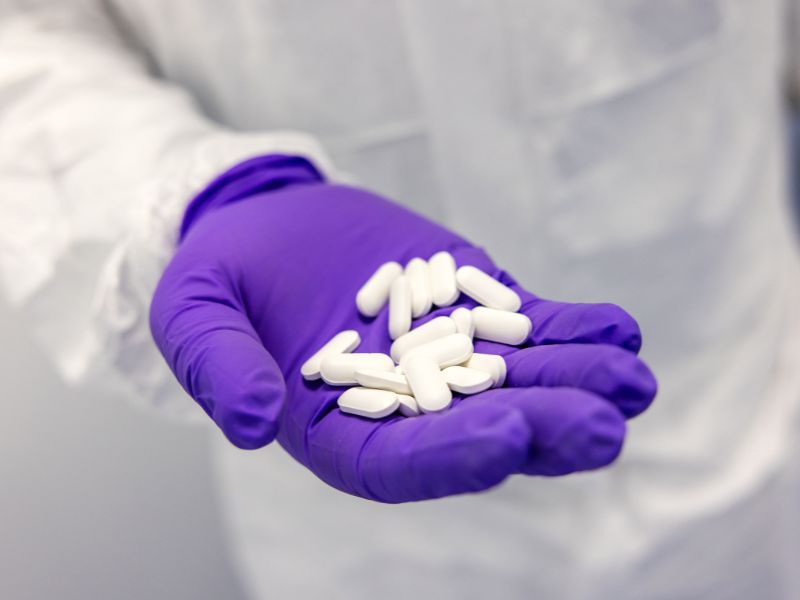
Tablet formulation strategies
Formulation strategies for tablets involve a meticulous process that considers various factors to ensure the efficacy and safety of the medication. Pharmaceutical scientists utilise a combination of active pharmaceutical ingredients, excipients, and manufacturing techniques to develop tablet formulations that meet specific requirements.
These strategies may include selecting the appropriate binder, disintegrant, lubricant, and filler to achieve the desired characteristics such as hardness, disintegration time, and stability. Furthermore, optimising formulation parameters like particle size distribution, compression force, and coating thickness plays a crucial role in enhancing drug release profiles and bioavailability.
Discover Upperton's Formulation Development Capabilities
We have extensive drug formulation development experience taking research projects from early proof of concept and feasibility through scale-up and onto clinical manufacture for oral, nasal and pulmonary dosage forms.
Solid Dosage Forms
Tablets consist of one or more API and a number of excipients that impart various functional attributes onto the tablet formulation and its performance both in during processing and following administration to the patient.
Tablet formulation plays a crucial role in the effectiveness and safety of pharmaceutical products. By carefully selecting the right combination of active pharmaceutical ingredients (API) and excipients, pharmaceutical companies can ensure that tablets are easy to handle, administer, and store. The formulation process also involves addressing challenges like bioavailability and gastrointestinal stability to enhance patient outcomes.
In addition to the technical aspects, tablet formulation development requires an understanding of manufacturing processes that ensure consistent quality while keeping production costs in check. This comprehensive approach is essential for creating tablets that meet regulatory standards and provide optimal therapeutic benefits to patients.
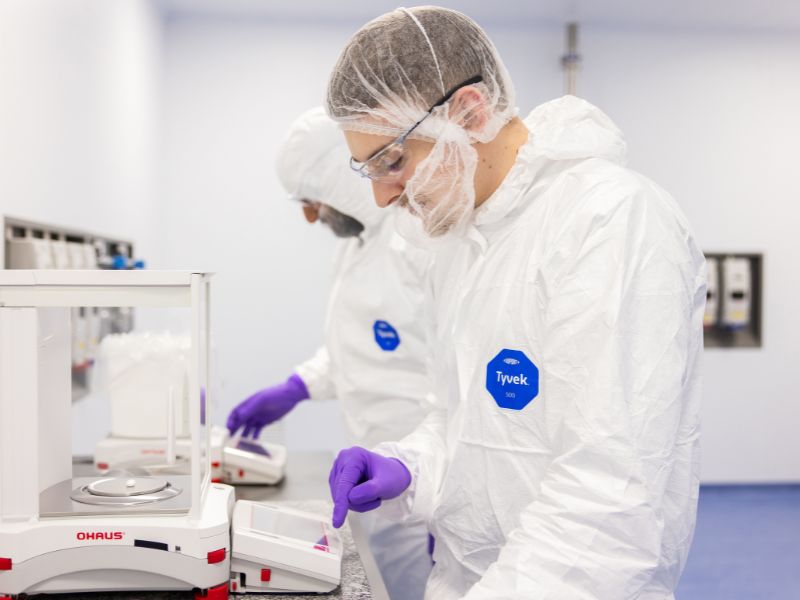
Tablet manufacture process in the pharmaceutical industry.
Granulation techniques
Wet Granulation – in order to improve the processability of the powder blend and / or to modified its powder flow characteristics, its mechanical properties, drug homogeneity and its release performance additional excipients (e.g. binders and disintegrants) may be required. These are added to the API blend with a granulation fluid whilst applying a range of mixing techniques (e.g. low shear, high shear, fluid bed). The wet mas is then typically passed through a screen, dried, milled and blended before it is suitable for compressing on a tablet machine. The increased number of unit operations make this process more complex with many more critical process parameters to control and monitor while the requirements to wet the materials and then dry the materials often presenting stability challenges.
Dry Granulation – as with wet granulation this process is applied to improve the processing and performance characteristics of the powder blend to be compressed. In dry granulation additional excipient (e.g. binders and disintegrants) are again added to the blend and then using a roller compactor, high pressure rollers force the mixed powder blend together and result in adhesion of the particles into ribbons. These ribbons are then broken down into granules using a granulation screen / mill. Following a final blend, the material is then suitable for tablet compression. Again, there are a number of critical process parameters that must be controlled but the elimination of a wet granulation fluid and the requirement for drying make this more efficient process and more suitable for API that have stability issues associated with wet granulation.
Tablet Press
Once the powder blend is in a suitable state for compression it is transferred to the tablet machine. The powder blend with the uniformly distributed API and suitable flow properties feeds into a die cavity and compressed to controlled weight and hardness between an upper and lower punch. The design of the punches can be used to make tablets of various shapes and sizes and to include attributes such as a break-line or to add an identification mark or dose strength onto the tablets during compression.
Tablet presses come in many sizes and with a range of capabilities, the speed of rotation and the number of stations dictating the potential output delivered from a few hundred per hour to over a million per hour. Careful control of the processing parameters such as compaction pressure and speed are required to ensure all tablets are produced to the same specifications.
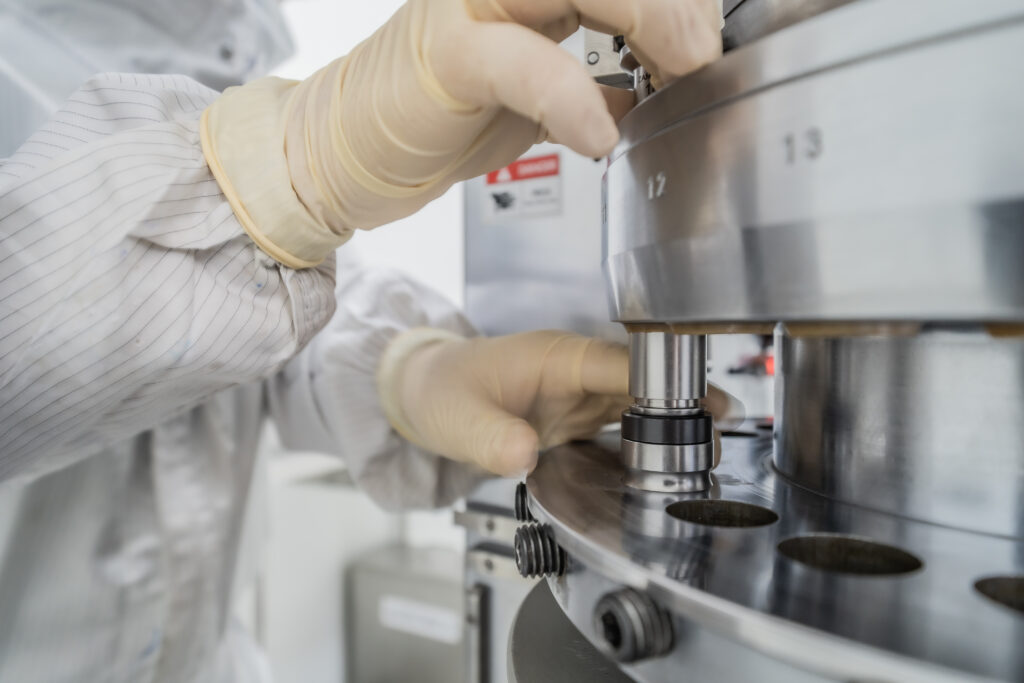
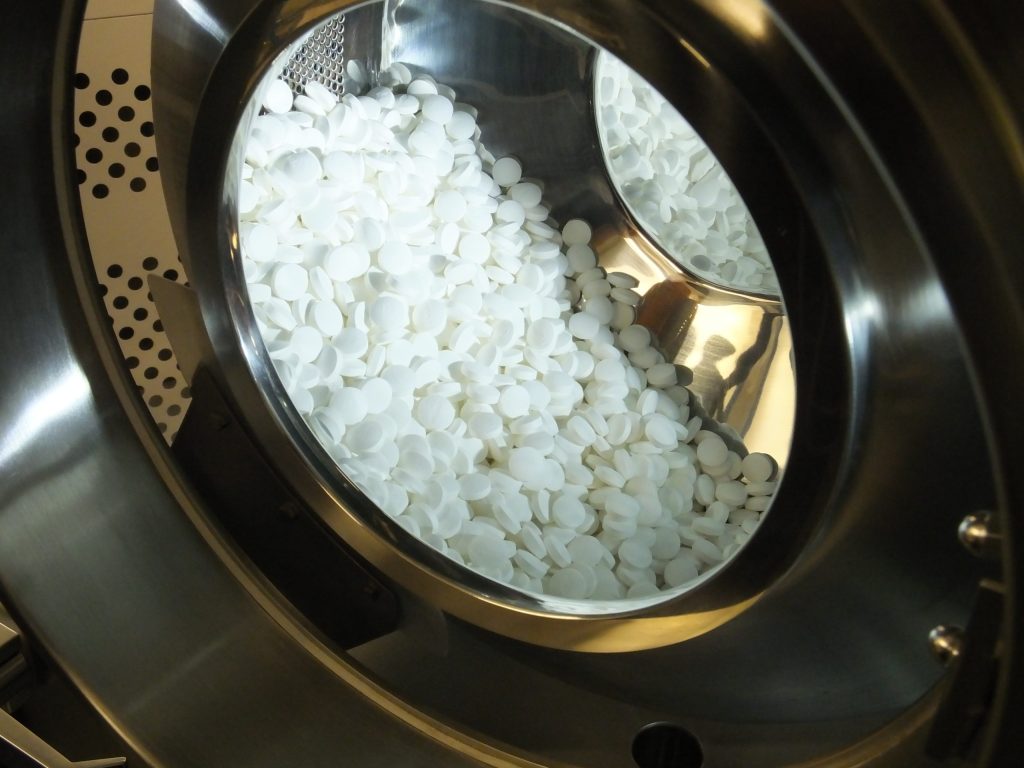
Once manufactured, the tablet core needs to be subjected to further processing operations such de-dusting to remove any loss uncompacted powder on the tablet surface collected from the tablet press. The tablet core also needs to be metal checked to ensure that no metal fragments have been inadvertently picked from a damaged tablet machine or tablet punch.
In most cases tablets are then film coated. Coating can be performed by a number of techniques such as fluid bed coating or pan coating in equipment such as the O Hara Labcoat MX as used at Upperton. In some instances, the coating is non-functional and is purely for handling, administration or aesthetic reasons. In other instances the coating may be required to control the release profile of the tablet such as enteric coating which ensures that tablet will not disintegrate in the stomach pH or for taste masking to ensure the patient is not put off taking the medicine by an unpleasant taste.
Overall, the tablet process offers a vast array of options for the formulation scientist to ensure that the API is delivered to the patient in a form that is easy to administer and is of a consistent quality with the desired release profile.
Let's work together
How can we help you?
Frequently Asked Questions
What are the stages of tablet formulation?
How do different types of tablets differ in their formulation?
Different types of tablets can vary significantly in their formulation based on factors such as the desired release profile, intended administration route, and patient preferences.
For example, immediate-release tablets, such as compressed tablets, are formulated to release the drug quickly once ingested, providing rapid therapeutic effects. On the other hand, extended-release tablets, like compression-coated tablets, are designed to deliver the drug over an extended period of time, allowing for less frequent dosing.
Additionally, chewable tablets are formulated to be easily chewed and swallowed without water, making them convenient for patients with swallowing difficulties or children. Effervescent tablets contain ingredients that react with water to release carbon dioxide gas, resulting in a fizzy solution that can be more palatable for some individuals. Disintegrating tablets, on the other hand, rapidly break down in the mouth without the need for additional liquid or chewing, making them a suitable option for patients with difficulty swallowing or those who prefer not to chew their medication. Each type of tablet formulation is tailored to meet specific patient needs and preferences while ensuring the effective delivery of the active pharmaceutical ingredient through disintegration.
Get in touch.
If you’re looking to work with a CDMO that can support your product from preclinical development to market and beyond, then we’re here to help.
